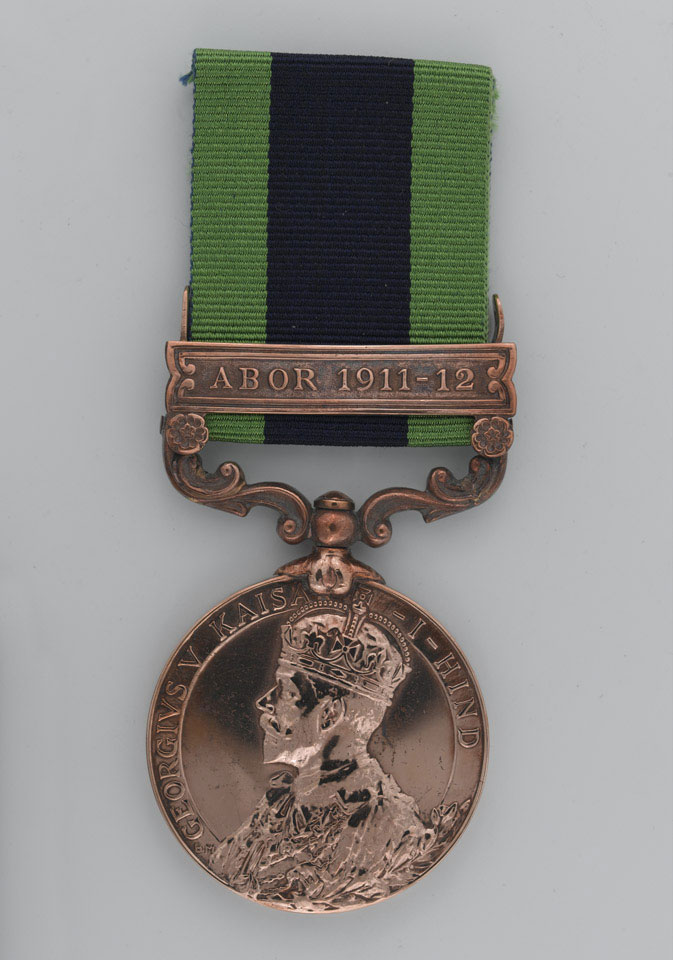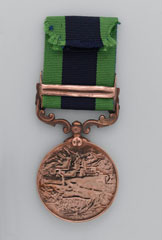
Online Collection
Replica India General Service Medal 1908-35 awarded to war dog 'Bab' of 1st Battalion, 8th Gurkha Rifles, 1911 (c)
This medal was awarded to 'Bab', a dog presented to the 1st Battalion by the wife of one of the officers. According to the regimental history, the dog 'gave warning that the enemy were in the neighbourhood' of the battalion during the Abor Expedition (1911-1912). This was carried out to punish the perpetrators of a massacre of a British colonial official, a doctor and their coolies on the Assam border.
The Army used dogs in various capacities. They were trained to carry messages and medical supplies, act as sentries and scouts, and were used in mine detection and seeking out casualties.
Lieutenant-Colonel Edwin Richardson was a British pioneer in the use of war dogs, although he was not initially successful in convincing others of his ideas. Britain was the only European nation to enter the First World War (1914-1918) without a military dog programme. But by 1916 a War Dog Training School had been established in Shoeburyness.
The threat of snipers made it hard for people to carry messages over long distances. Dogs presented a smaller target and were able to travel faster than human messengers. Messages were carried in a tin slung around the dogs' necks. War dogs were sourced from places like Battersea Dogs' Home. When demand outstripped supply the authorities turned to the Police, who sent stray dogs to the school.
NAM Accession Number
NAM. 1963-10-82-1
Copyright/Ownership
National Army Museum Copyright
Location
National Army Museum, Soldier gallery
Object URL
https://collection.nam.ac.uk/detail.php?acc=1963-10-82-1


